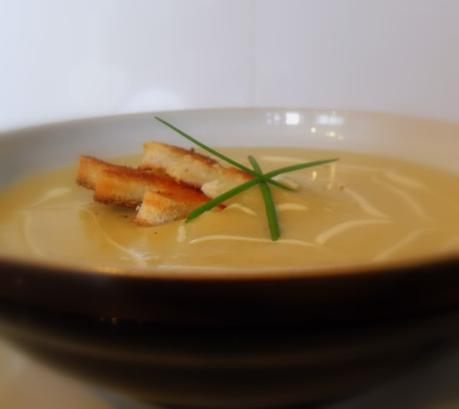
When I was a child, one of my favorite vegetables was swede. A Swede is called a Rutabaga in the US, or in Canada, Turnip. In reality, there is actually a huge difference between a Turnip and a Swede. They are not the same thing at all.

Although a Swede (Rutabaga) and Turnip can look very similar in size and shape, the similarity ends there. They are both quite botanically different. If one looks close enough you can easily see the difference between the two.

For one, turnips are usually smaller than Swedes with creamy white, smooth skin. Some have a tinge of purple on the top part of its roots. Swedes or rutabagas are a lot bigger, its skin dark and tough, with a hue of yellow-orange in its flesh.
Although both can be eaten raw whether in a salad or mixed in other dishes, turnips taste stronger than Swedes whose flavor is on the sweet side. Turnips also have a higher water content compared to rutabagas.
Although both are root crops they are also very different in terms of growing with Swedes being slightly easier to grow than Turnips, although Turnips are certainly faster growing. Swedes however crop over a longer period of time and can be left without tending throughout the winter. Unlike rutabagas though . . . turnips are unable to withstand hard frosts. And now you know.

Mom always added Swede to soups and stews . . . the add a beautiful flavor and almost sweetness, which I know is hard to believe, as they can sometimes come across as being somewhat bitter . . . but long slow cooking brings out their natural sweetness and that is what I love most about them.
Every Thanksgiving and Christmas my mother would cook a huge pot of Swede and Potato, which would be mashed with lots of butter and cream. Oh my but that was my favorite part of the meal . . . well, next to the turkey that is! Oh and the stuffing! It surely took third place of honor though in the meal of all meals!

In Wales there is a national dish known as Punchnep, which is a buttery, creamy mash of swede and potatoes. I love it. It is the same thing that my mother always made . . . cept we just called it Turnip Mash. We didn't know it was exotic or Welsh or anything like that . . . we just called it good eating.

This soup has all the same delightful flavours as that delicious Welsh dish, along with the addition of leeks, which add another extra special something to the mix.

I guess it's like "Punchnep" ampedway up!! Whatever you call it . . . Swede, Rutabaga . . . Turnip . . . Punchnep Amped Up . . . it's a good soup . . . very . . . very good soup!

*Swede and Potato Soup*
Serves 6 to 8
Printable Recipe
We love swede in this house, or rutabaga as it is known in other parts of the world. It makes a delicious soup when combined with leek and potato. Think of this as leek and potato soup kicked up a notch!
1 1/2 pounds (24 ounces) peeled swede, cut into cubes
1/2 pounds of peeled and cubed potato
the white parts of two large leeks, cleaned and thinly sliced
2 ounces unsalted butter
570ml of chicken stock (approx two cups)
570 ml of milk (approx two cups)
salt and pepper to taste
freshly ground nutmeg to taste
To serve:
Toasted croutons
chives
double cream
Melt the butter over low heat in the bottom of a large saucepan. Add the swede, potatoes and leeks. Stir them around in the butter to coat and then cover the saucepan. Put the lid on and allow to sweat over low heat for about 15 minutes, stirring occasionally. (You can add a TBS or two of the stock if they start to stick.) At the end of 15 minutes, add the stock and the milk. Bring up to a simmer and then reduce the heat to low and allow to simmer gently for about 15 minutes, until the vegetables are all fork tender. Remove from the heat and puree with a stick blender until smooth. Season to taste with salt, black pepper and nutmeg.
Ladle into hot soup bowls. Drizzle the top with a bit of double cream and float some toasted croutons on top. Garnish with some chives.

